The Michigan State Fair
By Jenny Nolan
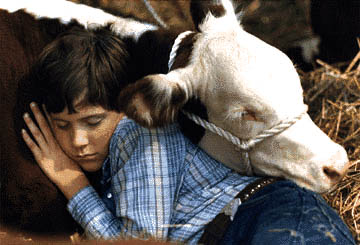
In 1839 a handful of Michigan pioneers planned a state fair, the first in the country. It was a disaster. And it probably explains why fair historians rarely if ever refer to the event, and instead start counting the fairs from 1849.
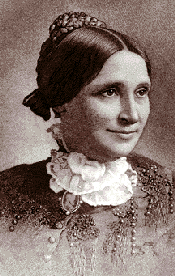
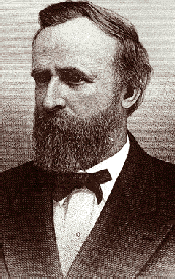
The 1839 Ann Arbor fiasco had only two exhibitors and not many more visitors. The official explanation was that "Exhibitors forgot it was opening." Agricultural eminences conveniently forgot about the fair for 10 years until the idea came up again in 1849.
Even counting the successful 1849 fair as the first, the Michigan State Fair is the oldest in the country, but that fair was almost derailed by political squabbling. One of the foremost advocates of an annual fair was the Democratic governor of the state, Ephradatus Ransom. He also was president of the Michigan Agricultural Society, and some of the other officers of the society were members of his administration.
Whig leaders (the Republican party was not formed until 1854) charged that Ransom planned a state fair to promote his political interests, and they advised a boycott. The governor was able to soothe their fears by explaining that it was just coincidence that most of the officers of the fair were Democrats, and Whig opposition subsided.
In May of 1849, the executive committee of the Agricultural Society met and designated September 25, 26 and 27 as the dates for the fair, to be held in Detroit, provided the citizens raised $500 to help pay the expenses. The prizes or premiums were fixed at $1,000. The railroads agreed to give one-fourth rates to those transporting exhibits and one-half rates for passengers.

The location for the fair was a field on "the Pontiac Road" -- on the southwest corner of what is now Woodward and Duffield, just north of Grand Circus Park. George V. N. Lothrop owned the field and donated it for use by the fair.
The editor of The Michigan Farmer wrote for that year's October 1 issue: "The State Fair has been held and it was a triumph. A new era in our history has opened. On Monday the great gathering commenced and on Tuesday the multitudes came pouring in from every quarter and through every channel, by railroad, by steamboat, by stage, in wagons, on horseback and on foot until the streets swarmed with people."
The admission price was one shilling (about 12 1/2 cents). Some 14,000 tickets were sold at that price, along with 1,400 membership tickets at $1 each. The gate receipts were $3,150, which covered all expenses.
Exhibits were varied: an entire building, Mechanics Hall, measuring 50 x 100 feet, was given over to farm implements and machinery. Another building was reserved for domestic products, including ladies' needlework and dairy products. A Chicago lady's quilt was made of 9,800 pieces and depicted the sun, moon, stars, rivers and lakes, a storm, and a rainbow, among other scenes. A much-admired piece of embroidery represented Pharoah, his cup bearer, and his wife, interceding for the Jews.
Mrs. J. Jones of Dearborn won a prize for the best pair of ladies woolen stockings. Mrs. Frederick Buhl (grandmother of Walter Buhl Ford) took first prize for a patchwork quilt. H.R. Andrews of Detroit won the plowing match, plowing one-quarter acre in 43 minutes. He won $10. John G. Morse of Ann Arbor was awarded a prize for an essay on "The Culture of Wheat."
Fairgoers eagerly sought out the latest invention -- the safety pin -- but it did not make its appearance until the following year. Also appearing in 1850 were Sir David Brewster's stereo camera and Oliver Wendell Holmes' steropticon viewer. Even with such attractions, the resounding success of the first fair was unfortunately not repeated the following year, when the fair was held in Ann Arbor. Abysmal attendance there had the promoters moving back to Detroit in 1851, and for the next four years, the fair was held on the Cass and Jones farms between Michigan and Grand River, near Third. The Detroit fair site was later moved to a spot near Bloody Run, the east side creek near Mt. Elliot.
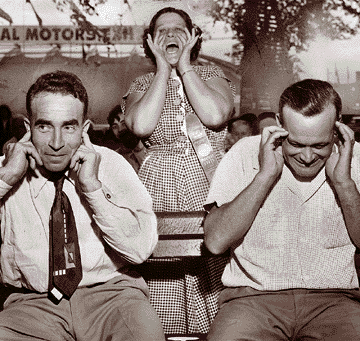
The state fair was also held in Kalamazoo, Jackson, Battle Creek, Adrian, Saginaw, Lansing, Grand Rapids and Pontiac before finally coming to rest at its present site on Woodward Avenue south of today's Eight Mile. Joseph L. Hudson bought 164 acres in 1905 and deeded it to the Michigan Agricultural Society, which gave the land to the state in 1921.
By 1865 the fair was well established; the livestock exhibited included a great variety of cattle: Devon, Hereford, Ayreshire, Galloway, Alderney, and Shorthorn. The best team of oxen, consisting of five yoke, won $50. Sheep, swine and poultry were all thrown in together, with Angora goats added for good measure. The best pair of wild turkeys won a $2 prize. There was a whole class of awards devoted to stoves -- the best cooking stove, for either wood or coal; the best hall or parlor stove, the best self regulating stove for the parlor. The best "furnace or other apparatus for warming homes" achieved a silver medal.
In 1879, President Rutherford B. Hayes and his wife attended the fair. She had her foot measured for a pair of shoes to be made by Hazen S. Pingree's shoe factory, an exhibitor. The high buttoned shoes were presented to the first lady and completed at the end of her tour of the fair a few hours later.
In the 1880s and '90s, there was always a contingent of light-fingered pickpockets, three-card monte afficionados and con men at the fair. On one occasion, Mr. William Smith was exhibiting his prize livestock. Mr. Smith was a favorite of most of the "dips" as he visited so many fairs and would cheerfully lose money in games of chance. He had a valuable gold watch, won at an earlier exhibition, and was very proud of it. One hot day, he was taking a nap, and a pickpocket who wasn't one of the usual fair con men lifted his timepiece. When he woke up and discovered his loss, he made quite a row.
The "boys" heard him, told him to be quiet and to remain where he was. In a few moments, from a corner of the shed, a man's face appeared. He approached Mr. Smith, and from under his coat, pulled out an old soft hat full of watches. With profuse apologies, he asked Mr. Smith to look over the assortment and see if his was there. It was, and was duly returned.
In 1893, an incipient depression and lack of funds kept the fair from being held, but it was started up again the next year.
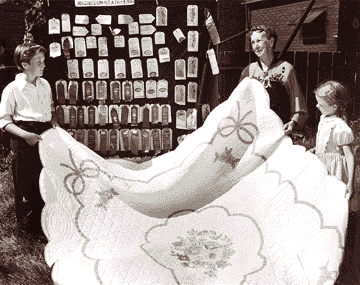
Farm wives in the early days were renowned for their cooking skills. A woman who provided enticing meals for the help was an asset for a farmer who wanted to attract the hardest working farmhands at harvest time. Getting ready for the fair in the early part of this century, a farm wife described, "was filled with agony and joy. Everyone pitched in. If you entered a cake, you were putting your reputation as a housewife on display. At judging time your heart was in your mouth."
A 1956 newspaper article, sounding quite patronizing to today's ears, harks back to the early days of the fair to comment: "It's a far cry from the hoop skirts and pantalets of that era to the shorts and toreador pants worn by many visitors of 1956, but in many ways the lass of 1849 and today's miss appear to be 'sisters under the skin.' Now -- as then -- women are happy to spend countless hours on canning, needlework and cakemaking for prizes that are often as low as $1."
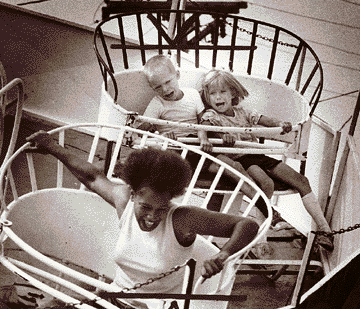
Overall, prizes increased greatly over the years, from a total of $800 at the first fair to $10,462 in 1890; $102,622 in 1929, and $140,000 in 1966.
Animal exibits now outdraw farm machinery; city folks love to see the animals and their babies, but early city dwelling attendees were not so long off the farm that they wanted to be reminded of early morning milking chores. They were more interested in new fangled machinery. Ironically, some of that machinery has made many fair activities obsolete on the farm.
It is due mainly to dedicated animal lovers that Clydesdales and Belgian draft horses are still seen at the fair. The huge, beautiful horses have long been automated out of their jobs of pulling wagons. Fair managers try to recreate some of the nostalgia of forgotten times with such things as husband and hog-calling contests.
Now the midway draws the crowds, with rides and cotton candy. And the entertainment is by nationally known singers or groups. But the country spirit of the early fairs lives on in champion steer judgings, sheep shearing, pie baking and eating competitions, freckle and ponytail contests, vegetable displays, and giant squash. Quilting is a thriving craft. Even though the population has done an about face from being 97 percent rural to 97 percent urban or suburban, we are drawn to reminders of the farm life of our great-grandparents' day, and a day at the State Fair is a nostalgic link to our communal past.
